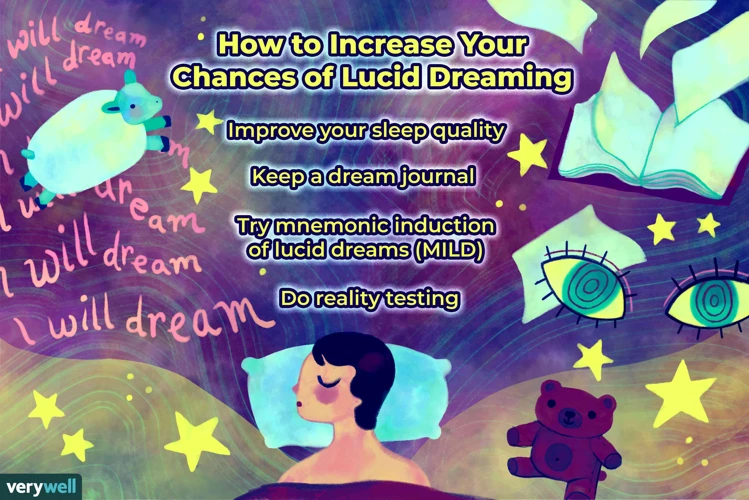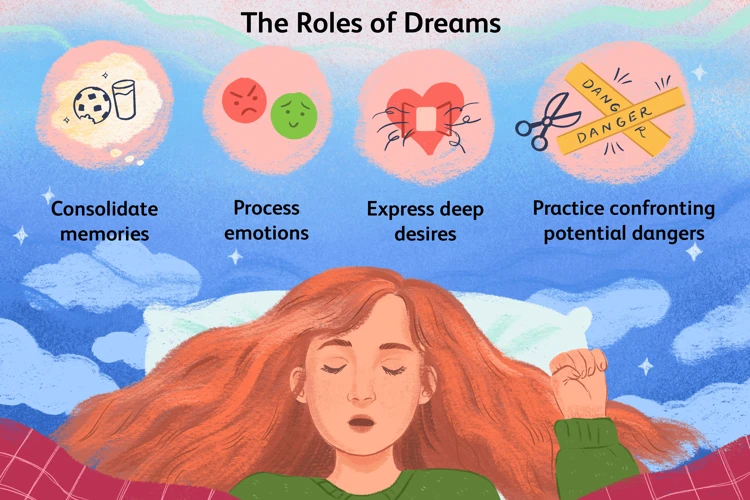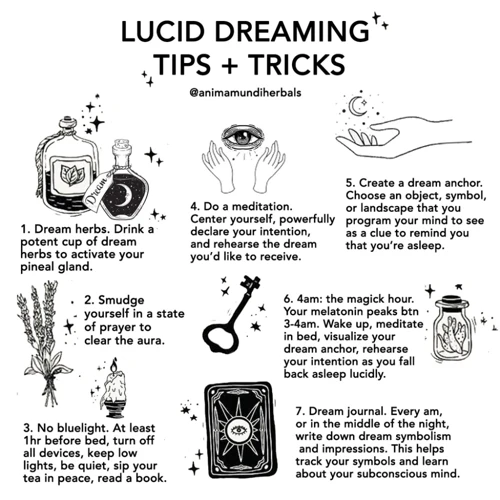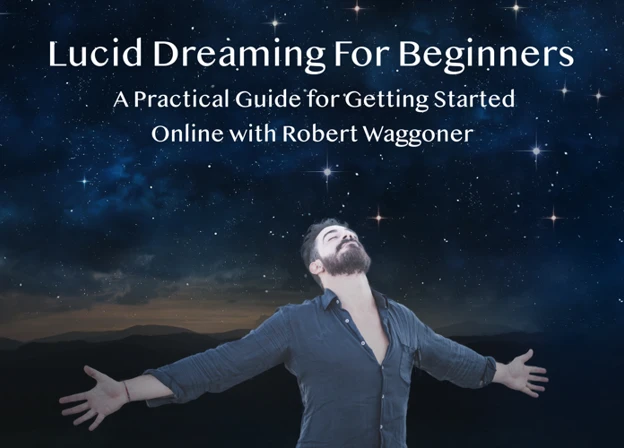Have you ever wondered what it would be like to control your dreams, to explore impossible worlds, or to experience incredible adventures while you sleep? If so, then you’re in for a treat! In this comprehensive guide, we will delve into the fascinating realm of lucid dreaming – a state of awareness that allows you to become conscious and take control of your dreams. Whether you’re a beginner seeking to understand the basics or a seasoned dreamer looking to enhance your skills, this article will provide you with everything you need to know about lucid dreaming. So, get ready to unlock the hidden potential of your mind and embark on a journey like no other.
What is Lucid Dreaming?

Lucid dreaming is a phenomenon that occurs when you become aware that you are dreaming while you are still in the dream itself. It allows you to have a sense of control and consciousness within the dream world. When you are lucid dreaming, you can actively participate in and manipulate the dream experience. This means you can choose what to do, where to go, and how to interact with the dream environment. Lucid dreams can be incredibly vivid and realistic, often feeling just as real as waking life. This state of awareness opens up a world of possibilities, where you can fly through the sky, meet incredible characters, or explore imaginary landscapes. Lucid dreaming is an exciting and unique experience that offers endless opportunities for self-exploration, creativity, and personal growth. It can be a powerful tool for tapping into the limitless potential of your subconscious mind. So, whether you’re curious about the mysteries of the dream world or eager to harness the power of lucid dreaming for personal development, understanding the ins and outs of this phenomenon is the first step towards unlocking its full potential. Be sure to check out the impact of dreaming on sleep disorders, the relationship between dreams and stress, and the science behind dream interpretation to dive even deeper into the fascinating world of lucid dreaming.
Benefits of Lucid Dreaming

Exploring the realm of lucid dreaming can offer a wide range of benefits for both your mind and your overall well-being. Let’s take a closer look at some of the incredible advantages that come with practicing lucid dreaming:
1. Self-Discovery and Personal Growth: Lucid dreaming provides a unique opportunity to delve into the depths of your subconscious mind and gain valuable insights about yourself. By exploring your dreams, you can uncover hidden desires, fears, and motivations, leading to enhanced self-awareness and personal growth.
2. Creative Inspiration: Lucid dreaming can profoundly enhance your creativity. When you are lucid, you can actively participate in shaping your dream world, allowing you to experience and create things that may not be possible in waking life. This opens up a vast realm of inspiration that can benefit various creative pursuits, such as writing, art, and problem-solving.
3. Nightmares and Trauma Healing: Lucid dreaming can be a powerful tool for overcoming nightmares and trauma. When you are aware that you are dreaming, you can consciously change the course of the dream and transform frightening or distressing scenarios into positive or empowering experiences. This can help reduce the impact of nightmares and provide a sense of control and healing.
4. Enhanced Problem-Solving and Skill Improvement: During lucid dreaming, you can practice and develop specific skills or scenarios, improving your real-life performance. Athletes can use lucid dreaming to visualize and enhance their athletic abilities, while students can review and study complex subjects within the dream state.
5. Emotional Healing and Confidence Building: Lucid dreaming allows you to revisit past experiences, confront negative emotions, and work towards emotional healing and growth. By consciously addressing and resolving emotional issues within the dream, you can build confidence and empowerment in waking life.
6. Rehearsing Future Situations: Lucid dreams provide an opportunity to rehearse and prepare for future situations, such as job interviews, public speaking engagements, or challenging conversations. By practicing these scenarios in the dream state, you can increase your confidence and improve your performance in real-life situations.
7. Escapism and Adventure: Lucid dreaming offers a chance to escape the confines of reality and embark on thrilling adventures. Whether you dream of soaring through the sky, exploring mystical lands, or encountering extraordinary beings, lucid dreams provide a safe and exciting platform for imaginative exploration and adventure.
These are just a few of the many benefits that lucid dreaming has to offer. The experience of being fully conscious and in control of your dreams can be truly transformative and enriching. So, whether you’re seeking personal growth, creative inspiration, emotional healing, or the sheer joy of exploration, lucid dreaming is a powerful tool that can help you unlock your full potential.
Common Misconceptions about Lucid Dreaming

Lucid dreaming is a concept that has gathered a fair amount of attention and intrigue over the years. However, there are several common misconceptions that surround this topic. Let’s take a closer look at some of these misconceptions and separate fact from fiction.
1. Lucid dreaming is a form of astral projection: While both lucid dreaming and astral projection involve altered states of consciousness, they are distinct experiences. Lucid dreaming occurs within the dream world, where you are aware of and can control your dreams. Astral projection, on the other hand, is believed to involve an out-of-body experience where your consciousness separates from your physical body.
2. Lucid dreaming is dangerous: Lucid dreaming itself is not inherently dangerous. It is a natural state of awareness that occurs during dreaming. However, it is important to approach lucid dreaming with responsibility and self-care. Some individuals may experience sleep disturbances or become obsessed with lucid dreaming, affecting their overall sleep quality. It is important to maintain a healthy balance between wakefulness and sleep.
3. Lucid dreaming is only for experienced dreamers: While lucid dreaming can be enhanced with practice and experience, it is not limited to a select few. Anyone can learn to lucid dream with dedication and the right techniques. It is a skill that can be developed over time and with consistent practice.
4. Lucid dreaming is the same as vivid dreaming: Although lucid dreams can be incredibly vivid, having a vivid dream does not necessarily mean you are lucid. Lucid dreaming specifically refers to the state of being aware that you are dreaming while within the dream itself.
5. Lucid dreaming can replace real-life experiences: While lucid dreaming can provide unique and immersive experiences, it is important to remember that it is still a product of the imagination. While you can engage in simulated activities and explore fantasy worlds, it is not a substitute for real-life experiences and interactions.
By dispelling these common misconceptions about lucid dreaming, you can approach this practice with a clearer understanding and make the most out of your lucid dreaming journey.
Getting Started with Lucid Dreaming

Getting started with lucid dreaming is an exciting journey that requires patience, perseverance, and a willingness to explore the depths of your mind. Here are some steps to help you begin your lucid dreaming practice:
1. Set your intention: Before you go to sleep, remind yourself that you want to have a lucid dream. Repeat affirmations such as “I will be aware that I’m dreaming” or “I will have a lucid dream tonight.” This sets a strong intention in your subconscious mind.
2. Keep a dream journal: Start keeping a dream journal by your bedside. As soon as you wake up, write down any details or fragments of your dreams that you can remember. This helps in increasing dream recall and recognizing dream patterns.
3. Practice reality testing: Throughout the day, perform reality checks to determine whether you are in a dream or waking state. Pinch yourself, look at a clock, or try to push your hand through a solid object. These reality checks will become habits that you can carry into your dreams.
4. Visualize lucid dreams: Imagine yourself having a lucid dream, visualize the details, and imagine how it feels to be aware within the dream. This visualization practice helps to train your mind and increase the chances of having a lucid dream.
5. Utilize lucid dreaming techniques: There are various techniques that can help induce lucid dreams. Some popular ones include Wake Induced Lucid Dreaming (WILD), Mnemonic Induced Lucid Dreaming (MILD), and the Countdown Technique. Research and explore these techniques to find the one that resonates with you.
Remember, getting started with lucid dreaming requires dedication and practice. It may take time to have your first lucid dream, but don’t get discouraged. Patience and persistence will eventually lead to success. The key is to maintain a consistent routine and keep an open mind. So dive into the world of lucid dreaming and get ready to unlock the mysteries of your subconscious mind.
Techniques to Induce Lucid Dreams

There are various techniques that can help you induce lucid dreams, allowing you to experience the thrill of conscious dreaming. One popular method is reality testing, which involves regularly questioning your surroundings to determine whether you are dreaming or awake. By performing these reality checks throughout the day, such as trying to push your finger through your palm or looking at a digital clock to see if the numbers change, you can train your brain to perform similar checks while you’re asleep. Another technique is wake-induced lucid dreaming (WILD), which involves transitioning from a waking state directly into a lucid dream without losing consciousness. This technique requires relaxation exercises, deep breathing, and focusing your mind as you drift into the dream state. The mnemonic induced lucid dreaming (MILD) technique involves setting an intention to remember that you are dreaming while you sleep. This can be accomplished by repeating a mantra or affirmation before bed and visualizing yourself becoming lucid in a dream. Lastly, the countdown technique involves mentally counting down from a high number while imagining yourself becoming more and more aware of the dream world. By practicing these techniques consistently and with patience, you can increase your chances of having lucid dreams and exploring the limitless boundaries of your imagination.
Reality Testing
Reality testing is a fundamental technique used to enhance lucid dreaming. It involves regularly questioning the nature of your reality in order to form a habit of critical awareness. By performing reality tests throughout your waking hours, you train your brain to question whether you are dreaming or awake. Here are some effective reality testing methods to incorporate into your lucid dreaming practice:
- Reality Check: Perform simple reality checks throughout the day, such as looking at your hands, reading text, or trying to push a finger through your palm. In dreams, these actions often produce unusual or inconsistent results.
- Mindfulness: Practice mindfulness throughout the day by tuning in to your senses and surroundings. By being fully present in the moment, you can increase your awareness and prime your mind for lucid dreaming.
- Dream Signs: Pay attention to recurring themes, people, or situations in your dreams. These “dream signs” can serve as triggers, reminding you to question your reality when you encounter similar experiences in waking life.
- Awareness in Dreams: During dreams, attempt to notice any oddities or inconsistencies. This can help trigger lucidity by prompting you to question whether you are dreaming.
Remember, consistency is key when it comes to reality testing. By integrating these techniques into your daily routine, you can increase your chances of becoming lucid in your dreams. So, keep questioning your reality, stay mindful, and be prepared to uncover the hidden wonders of the dream world.
Wake Induced Lucid Dreaming (WILD)
Wake Induced Lucid Dreaming (WILD) is a technique that involves transitioning directly from wakefulness into a lucid dream state. It requires a high level of focus and awareness as you maintain consciousness while your body falls asleep. The key to WILD is finding the balance between mental alertness and physical relaxation. To practice WILD, find a comfortable position and close your eyes. Begin by focusing your attention on your breath, allowing your body to relax deeply. As you start to feel your body becoming more relaxed, visualize yourself entering a dream world. Imagine the dream scene vividly using all your senses. The goal is to maintain awareness as your body falls asleep, nurturing the transition into the dream state. It’s essential to stay mentally awake and avoid drifting off into regular sleep. This technique requires practice and patience to master, as it can be challenging to maintain the delicate balance of consciousness while your body naturally wants to fall asleep. WILD can be a powerful tool for experiencing incredibly vivid and immersive lucid dreams. While it may take time to perfect, the rewards are well worth the effort. Give WILD a try and discover the extraordinary adventures that await you in the realm of lucid dreaming.
Mnemonic Induced Lucid Dreaming (MILD)
Mnemonic Induced Lucid Dreaming (MILD) is a popular technique used to induce lucid dreams. The key concept behind MILD is to improve dream recall and increase one’s ability to recognize and question their reality within a dream. To practice MILD, begin by setting an intention to remember your dreams and become aware of their potential lucidity. Before going to bed, repeat a mantra or affirmation to yourself, such as “I will have a lucid dream tonight” or “I am aware in my dreams.” While reciting your mantra, visualize a recent dream or a specific dream scenario that you would like to become lucid in. Focus on the details and immerse yourself in the imagery. This process helps prime your mind to recognize familiar dream elements while you’re actually dreaming. Additionally, combine this technique with a reality check, where you question whether you’re in a dream or awake during your waking hours. By regularly practicing reality checks, your mind will carry this habit into your dreams, increasing the chances of identifying a dream state. MILD requires consistency and dedication to see results, but with practice and an open mind, you can improve your lucid dreaming abilities over time. Remember to keep a dream journal to record your dream experiences and monitor your progress with the MILD technique.
Countdown Technique
The Countdown Technique is a popular method used to induce lucid dreams. It involves counting down from a specific number while visualizing yourself becoming more and more aware and lucid within the dream. Here’s how you can practice the Countdown Technique:
1. Set your intention: Before going to bed, firmly establish your intention to have a lucid dream and use the Countdown Technique. Repeat to yourself that you will become aware within your dreams and count down to lucidity.
2. Choose a number: Decide on a number that you will count down from during the dream. This number can be anywhere from 100 to 1. For beginners, starting with a higher number like 100 can be helpful.
3. Prepare for sleep: Get into a comfortable position, close your eyes, and relax your body. Take a few deep breaths to calm your mind and prepare for sleep.
4. Visualize the countdown: As you begin to fall asleep, start counting down in your mind while visualizing each number. Imagine yourself becoming more and more aware and present within the dream as you count down.
5. Focus on lucidity: With each number, reinforce the idea of becoming lucid within the dream. Visualize yourself noticing dream signs, recognizing the dream state, and taking control of the dream.
6. Repeat if necessary: If you reach the end of the countdown without achieving lucidity, start over from the beginning and continue the countdown until you fall asleep or until you enter a lucid dream.
The Countdown Technique serves as a powerful anchor for your consciousness, helping you maintain focus as you transition from wakefulness to the dream state. By combining visualization, intention setting, and repetition, this technique can increase your chances of experiencing lucid dreams. Remember to stay patient and persistent, as it may take some time and practice to achieve consistent results.
Keeping a Dream Journal

Keeping a dream journal is an essential practice for anyone interested in exploring and enhancing their lucid dreaming abilities. It involves writing down your dreams in detail as soon as you wake up. Here are some reasons why maintaining a dream journal is crucial:
1. Improved Dream Recall: Writing down your dreams immediately after waking helps to reinforce your memory of them. As you consistently record your dreams, you’ll notice that your ability to remember them becomes stronger over time.
2. Identifying Dream Signs: A dream sign is a recurring theme, object, or event that appears in your dreams. By documenting your dreams in a journal, you can identify these patterns and become more aware of them. This increased awareness makes it easier to recognize when you are dreaming, leading to more frequent lucid dreams.
3. Accessing Symbolism and Meaning: Dreams are often packed with symbolism and subconscious messages. By recording your dreams, you can analyze and interpret the symbolism within them, gaining insight into your subconscious mind and personal growth.
4. Creating Dream Triggers: A dream trigger is something in your waking life that reminds you to do a reality check or become aware that you are dreaming. By reviewing your dream journal regularly, you can identify elements from your dreams that can serve as dream triggers, helping to induce lucidity in future dreams.
To start your dream journal, keep a notebook or use a digital journaling app. As soon as you wake up, take a few moments to recall your dream and write down as many details as possible. Include the setting, characters, emotions, and any significant events. Don’t worry about writing in perfect sentences; the goal is to capture the essence of the dream. Be sure to date each entry, as this will help you track your progress over time.
Remember, consistency is key when it comes to maintaining a dream journal. Aim to write in your journal regularly, even if you only remember fragments of a dream. Over time, you’ll notice patterns, themes, and a deeper connection to your dream world, ultimately increasing your chances of having lucid dreams.
Enhancing Lucid Dreams

Enhancing lucid dreams can take your dream experiences to a whole new level of vividness and control. Here are some techniques to help you enhance your lucid dreams:
1. Stabilizing Lucid Dreams: As soon as you become aware that you are dreaming, it is crucial to stabilize the dream environment to prevent it from slipping away. Techniques such as rubbing your hands together, spinning in circles, or focusing on tactile sensations can help anchor you in the dream and maintain stability.
2. Controlling the Dream Environment: The power of lucid dreaming lies in your ability to manipulate the dream world according to your desires. Experiment with changing the scenery, summoning objects or characters, or altering the laws of physics. Remember, in this realm, anything is possible.
3. Exploring and Interacting: Lucid dreaming offers a unique opportunity for self-exploration and personal growth. Take advantage of this state by engaging with dream characters, asking them questions, or seeking guidance. You can also explore dream landscapes, visit imaginary places, or even revisit past memories.
By employing these techniques, you can turn your lucid dreams into immersive and transformative experiences. Remember that practice and patience are key to honing your skills as a lucid dreamer. So, dive deep into the realm of your dreams and unlock the limitless possibilities that await you.
Stabilizing Lucid Dreams
Stabilizing lucid dreams is an essential skill for maintaining the clarity and duration of your lucid dream experience. By stabilizing the dream, you can prevent the dream from fading or abruptly ending, allowing you to fully immerse yourself in the lucid dream world. Here are some effective techniques for stabilizing your lucid dreams:
1. Engage your senses: To prolong the lucid dream, focus on engaging your senses within the dream. Take a moment to look around and pay attention to the details of your surroundings. Notice the textures, colors, and shapes. Touch objects or surfaces in the dream, and vividly feel their sensations. Listen for sounds or voices in the dream environment. By actively involving your senses, you anchor yourself in the dream and reduce the chances of waking up.
2. Spin or rub your hands: If you feel the dream starting to fade or lose stability, try spinning around or vigorously rubbing your hands together within the dream. These actions help to stimulate and maintain a sense of physicality and sensory input, which can help anchor you in the dream and prolong its duration.
3. Verbal affirmations: Repeat affirmations such as “I am lucid dreaming” or “I am in control” to reinforce your awareness and intention within the dream. By using verbal cues, you strengthen your lucidity and increase your chances of staying in the lucid dream state.
4. Focus on your breathing: Another effective technique is to focus on your breathing within the dream. Pay attention to the sensation of inhaling and exhaling, as this can help you stay grounded and maintain your lucidity.
5. Visualize stability: If you’re experiencing any instability or uncertainty in the dream, visualize a stable and solid environment. Imagine the ground beneath your feet becoming firm and steady. Visualize a calm and serene atmosphere that promotes relaxation and stability. This visualization can help stabilize the dream and enhance your sense of control.
Remember, practice makes perfect when it comes to stabilizing lucid dreams. With time and experience, you will become more proficient in maintaining and prolonging your lucid dream adventures. So, the next time you find yourself lucid dreaming, utilize these techniques to enhance your experience and fully immerse yourself in the wonders of the dream world.
Controlling the Dream Environment
Controlling the dream environment is one of the most exciting aspects of lucid dreaming. Once you become aware that you’re dreaming, you can manipulate and shape the dream world according to your desires. Here are some techniques for taking control of the dream environment:
1. Changing the Setting: In a lucid dream, you have the power to transport yourself to any location you can imagine. Want to visit a tropical island or explore outer space? Simply visualize the new setting and let the dream morph around you.
2. Altering Objects: Use your imagination to modify objects within the dream. You can transform a regular object into something completely different or make it disappear altogether. For example, turn a pen into a magic wand or make a wall vanish in thin air.
3. Summoning Characters: Want to meet your favorite celebrity or have a conversation with a historical figure? In a lucid dream, you can summon individuals and engage with them in any way you wish. Visualize their presence and watch as they appear before your eyes.
4. Manipulating Elements: With practice, you can even manipulate natural elements like water, fire, or wind. Create a storm with a snap of your fingers or make a calm sea ripple with your thoughts. The dream environment is yours to shape and control.
Remember, the key to successfully controlling the dream environment is to believe in your ability to do so. Doubt or lack of confidence can hinder your control. Embrace your inner power and let your imagination run wild in the realm of dreams. By mastering the art of controlling the dream environment, you can create extraordinary experiences that go beyond the limits of reality.
Exploring and Interacting in Lucid Dreams
Exploring and interacting in lucid dreams is one of the most exciting aspects of this unique experience. Once you become lucid, you can actively engage with the dream environment and explore its limitless possibilities. Here are some ways to make the most out of your lucid dreams:
1. Experiment with flying: Flying is a popular and exhilarating activity in lucid dreams. Take advantage of your newfound control and soar through the sky, feeling the wind on your face and the freedom of being weightless. Try different flying techniques, such as gliding like a bird or zooming through the air like a superhero.
2. Visit new worlds: Use your lucidity to teleport yourself to different locations, whether it’s a serene beach, a bustling city, or a mystical forest. Explore the details of your dream world, from the gentle rustle of leaves to the intricate architecture of buildings.
3. Meet dream characters: Interacting with dream characters can be an intriguing and insightful experience. Engage in conversations, ask them questions, or seek guidance from wise dream figures. You may gain valuable insights or discover hidden aspects of your own subconscious.
4. Practice skills and abilities: Lucid dreams provide a safe space to practice and improve real-life skills. Want to enhance your musical abilities? Pick up an instrument and play flawlessly in your dream. Interested in honing your athletic prowess? Engage in a friendly sports competition with dream characters.
5. Conquer fears: Lucid dreaming offers an opportunity to confront and overcome fears in a controlled environment. Whether it’s facing a fear of heights, spiders, or public speaking, you can gradually desensitize yourself by gradually approaching and conquering these fears within the dream world.
6. Create and explore dreamscapes: Let your imagination run wild and create your dream world. Build magnificent structures, summon mythical creatures, or design breathtaking landscapes. The only limit is your creativity.
Remember, the key to exploring and interacting in lucid dreams is to maintain your lucidity and focus. Practice techniques to stabilize your dreams, such as rubbing your hands together or spinning in circles if the dream starts to fade. With practice, you’ll become more skilled at navigating and fully immersing yourself in the wonders of your lucid dreams. So, get ready to embark on extraordinary adventures and discover the limitless possibilities that await you within the realm of lucid dreaming.
Dealing with Nightmares and Sleep Paralysis

Dealing with nightmares and sleep paralysis can be a challenging aspect of lucid dreaming. While lucid dreaming can be a thrilling and immersive experience, it also opens the door to the possibility of encountering intense or even frightening scenarios. Nightmares are disturbing dreams that can evoke fear, anxiety, and even terror. When you find yourself in a nightmare during a lucid dream, it’s important to remember that you have the power to confront and overcome these frightening experiences. One technique to deal with nightmares is to face your fears head-on. By acknowledging that you are in a dream and reminding yourself that you have control, you can actively change the direction of the dream and transform the nightmare into a more positive or benign experience. Another technique is to try and alter your emotional state within the dream. By focusing on positive emotions such as love, joy, or calmness, you can shift the atmosphere of the dream and reduce the intensity of the nightmare.
Sleep paralysis, on the other hand, is a phenomenon that can occur when the mind wakes up but the body remains temporarily paralyzed. This can be a scary experience as you may feel trapped and unable to move, accompanied by the sensation of pressure on your chest or the presence of ominous entities. It’s important to remember that sleep paralysis is a natural occurrence and not harmful in itself. To deal with sleep paralysis, it can be helpful to remind yourself that it is temporary and will pass. Focus on trying to relax and regulate your breathing. Some techniques that can help break free from sleep paralysis include attempting to wiggle your toes or fingers, or trying to focus on moving a specific part of your body.
Additionally, establishing a regular sleep schedule, creating a relaxing bedtime routine, and minimizing stress in your waking life can also contribute to reducing the frequency of nightmares and sleep paralysis. Understanding that these experiences are part of the dream state and that you have the ability to navigate and overcome them will empower you to face these challenges with confidence and control. Remember, practice and patience are key when it comes to mastering lucid dreaming and effectively dealing with nightmares and sleep paralysis. So, embrace the adventure and keep exploring the depths of your dream realm.
Astral Projection and Lucid Dreaming

Astral projection is often associated with lucid dreaming due to their similarities in altered states of consciousness. However, it is important to note that they are distinct experiences. Astral projection refers to the belief or practice of an out-of-body experience where one’s consciousness leaves the physical body and travels to different realms or dimensions. On the other hand, lucid dreaming is the awareness of being in a dream state while still asleep. Despite their differences, some individuals have reported experiences that blur the lines between astral projection and lucid dreaming.
In astral projection, the individual may have a sense of floating or flying outside of their physical body. They claim to have control over their movement and can explore the astral plane or visit specific locations. Proponents of astral projection believe that this experience can lead to spiritual growth, expanded consciousness, and even contact with non-physical entities.
Lucid dreaming, on the other hand, occurs within the dream state itself. The dreamer becomes aware that they are dreaming and can exert varying degrees of control over the dream’s content. They can manipulate the dream environment, interact with dream characters, and even engage in activities that may not be possible in waking life. Lucid dreaming provides a unique platform for self-exploration and personal growth, allowing individuals to tap into their creativity and subconscious mind.
While astral projection and lucid dreaming differ in their nature, some experiences reported by individuals may blur the lines between the two. Some lucid dreamers claim to have had out-of-body experiences during their lucid dreams, similar to astral projection. These experiences may involve a sensation of floating or departing from the physical body. It is important to remember that these experiences are subjective and open to personal interpretation.
Whether you are interested in exploring astral projection or becoming skilled in lucid dreaming, it is essential to approach these practices with an open mind and a focus on self-discovery. Both astral projection and lucid dreaming offer opportunities for personal growth, exploration, and expanding the boundaries of consciousness. So, dive into the realms of astral projection and lucid dreaming, and embrace the extraordinary experiences that await you.
Lucid Dreaming Supplements and Aids

Lucid dreaming supplements and aids refer to various tools, techniques, and substances that are believed to enhance the likelihood or quality of lucid dreams. While these supplements and aids are not necessary for lucid dreaming, many individuals find them helpful in supporting their lucid dreaming practice. One popular supplement is Galantamine, which is a natural acetylcholinesterase inhibitor that can increase acetylcholine levels in the brain. Acetylcholine is a neurotransmitter that plays a role in memory and arousal, and higher levels of acetylcholine have been associated with increased dream recall and lucidity. Another commonly used supplement is Choline, which is a nutrient that is involved in the production and release of acetylcholine. It is often taken in combination with other supplements such as Galantamine to enhance their effects. Melatonin is a hormone that regulates sleep-wake cycles and is naturally produced by the body. It is commonly used as a sleep aid but can also promote more vivid and memorable dreams, including lucid dreams. Another aid that can be helpful is a lucid dreaming mask or a lucid dreaming app. These devices use various methods, such as flashing lights or sounds, to cue you that you are dreaming and help you become lucid. Additionally, practices such as meditation and mindfulness can be considered aids as they promote awareness and focus, which are key elements of lucid dreaming. It’s important to note that while these supplements and aids can be useful, they are not a guarantee for lucid dreaming and may affect individuals differently. As with any supplement or aid, it’s essential to research and consult with a healthcare professional before incorporating them into your routine. Experimenting with these supplements and aids can be an exciting way to enhance your lucid dreaming practice and explore the depths of your dreaming mind.
Lucid Dreaming and the Real World
Lucid dreaming is not just a fantastical escape into the dream world; it can also have a significant impact on your waking life. The experiences and skills you develop during lucid dreaming can carry over into the real world and benefit various aspects of your life. Here are a few ways in which lucid dreaming can intersect with the real world:
1. Creative Inspiration: Lucid dreaming can be a wellspring of creativity. The vivid landscapes, characters, and scenarios you encounter in your dreams can serve as an abundant source of inspiration for art, writing, and other creative pursuits. By exploring and interacting with these imaginative dream environments, you can tap into your subconscious mind and unlock new ideas and perspectives.
2. Problem Solving: Lucid dreaming can also be a valuable tool for problem-solving. Many dreamers have reported finding solutions to real-life challenges or gaining fresh insights into complex problems while in a lucid dream state. The conscious control and heightened awareness of lucid dreaming can help you approach problems from different angles and think outside the box.
3. Overcoming Fears: Lucid dreaming offers a safe space to confront and conquer fears. Whether it’s a fear of heights, public speaking, or spiders, lucid dreaming allows you to face your fears head-on within the dream environment. By repeatedly confronting and overcoming these fears in lucid dreams, you can build confidence and resilience that carries over into your waking life.
4. Exploring Personal Growth: Lucid dreaming provides a unique platform for self-exploration and personal growth. You can use lucid dreams to engage in introspection, confront unresolved emotions, and gain a deeper understanding of yourself. This heightened self-awareness can contribute to personal development and a greater sense of self-empowerment.
5. Enhancing Skills and Abilities: Lucid dreaming can be a playground for honing various skills and abilities. Athletes have reported using lucid dreams for mental rehearsal, practicing specific movements, or improving performance. Musicians and artists have used lucid dreams to refine their techniques or experiment with new styles. The opportunities for skill development within lucid dreams are virtually limitless.
By recognizing the link between lucid dreaming and the real world, you can approach your dream experiences with intention and purpose. With practice and dedication, you can harness the power of lucid dreaming to enrich your waking life in numerous ways. So, start exploring the dream world, unlock your potential, and let your dreams shape the reality you desire.
Conclusion
In conclusion, lucid dreaming is a remarkable skill that offers a variety of benefits and opportunities for personal growth. It allows you to tap into the power of your subconscious mind, explore new possibilities, and experience the impossible. Through various techniques like reality testing, WILD, MILD, and the countdown technique, you can increase your chances of having lucid dreams. Keeping a dream journal is also crucial in enhancing your abilities and understanding the patterns and symbols within your dreams. Once you achieve lucidity in your dreams, you can further enhance the experience by stabilizing the dream, controlling the dream environment, and engaging in exploration and interactions. It’s important to note that nightmares and sleep paralysis can sometimes occur during lucid dreaming, but there are ways to cope with these experiences and even use lucid dreaming as a means of overcoming fears. Additionally, the connection between astral projection and lucid dreaming offers even more avenues for exploration. While there are supplements and aids available to enhance lucid dreaming, it’s important to explore natural methods first and prioritize a healthy sleep routine. Ultimately, lucid dreaming is not just an escape from reality but can also have a positive impact on your waking life, improving creativity, problem-solving skills, and self-awareness. So, embrace the world of lucid dreaming and unlock the limitless potential of your dreamscapes. Sweet dreams and happy lucid exploring!
Frequently Asked Questions
1. Can anyone learn to lucid dream?
Yes, anyone can learn to lucid dream with practice and patience. It may come more easily to some individuals, but with the right techniques and dedication, anyone can achieve lucid dreaming.
2. Are lucid dreams always positive and enjoyable?
No, lucid dreams can vary in content and emotion, just like regular dreams. While they can be incredibly positive and enjoyable, they can also be confusing or even turn into nightmares. However, learning how to navigate and control lucid dreams can help turn negative experiences into positive ones.
3. Can lucid dreaming be dangerous?
Generally, lucid dreaming is considered safe and harmless. However, it is essential to practice good sleep hygiene and prioritize your well-being. If you ever feel uncomfortable or disturbed by your lucid dreams, it is advisable to seek guidance from a professional.
4. Can lucid dreaming improve real-life skills?
Yes, lucid dreaming can positively impact real-life skills. By practicing specific actions and scenarios within lucid dreams, you can enhance learning, creativity, and problem-solving abilities in waking life.
5. Are there any techniques to induce lucid dreaming?
Yes, there are several techniques to induce lucid dreaming, such as reality testing, wake-induced lucid dreaming (WILD), mnemonic-induced lucid dreaming (MILD), and the countdown technique. These techniques can help increase your chances of having a lucid dream experience.
6. How long can a lucid dream last?
Lucid dreams can vary in duration. Some may last only a few minutes, while others can feel like hours. With practice, you can learn to prolong the duration of lucid dreams and have more immersive experiences.
7. Can lucid dreaming be used for self-exploration and personal growth?
Absolutely! Lucid dreaming provides a unique opportunity for self-exploration and personal growth. It allows you to delve into your subconscious mind, overcome fears, gain insights, and develop a deeper understanding of yourself.
8. Is there a connection between astral projection and lucid dreaming?
Astral projection and lucid dreaming are often viewed as separate phenomena. Astral projection involves an out-of-body experience, while lucid dreaming involves becoming aware within a dream. However, some individuals believe there may be a connection between the two, and experiences can overlap.
9. Can supplements or aids help induce lucid dreams?
There are various supplements and aids available that claim to enhance lucid dreaming, such as certain herbs, supplements, or lucid dreaming masks. While they may work for some individuals, it’s essential to research and consult with a healthcare professional before trying any of these methods.
10. How does lucid dreaming impact everyday life?
Lucid dreaming can have a positive impact on everyday life. It can improve creativity, problem-solving abilities, and overall well-being. Additionally, the practice of lucid dreaming can promote better sleep quality and encourage a deeper understanding of the mind and consciousness.








